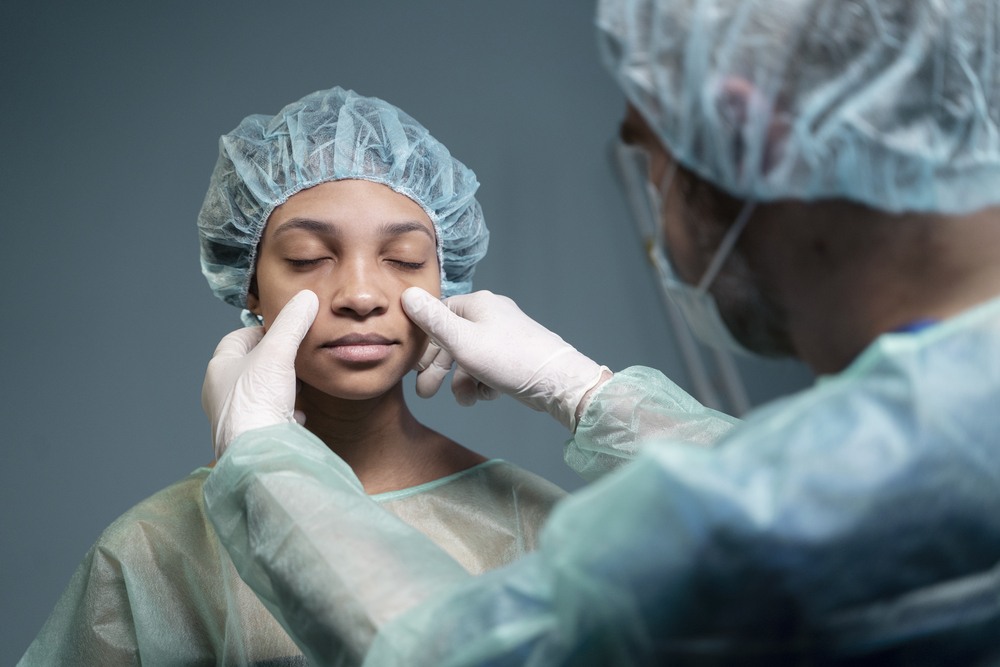

As stores quickly replace Halloween décor with winter holiday delights, I’m reminded that the party season (and the desire for glow-ups) is right around the corner. When the unrelenting flood of miraculous before-and-afters on social media and the pressure to ‘look your best’ through the festivities meet the temptation of a few weeks off and hard to beat prices in exotic destinations…


It’s a winter wonderland recipe for disaster, not a clever Christmas stealth makeover.
And beyond the “Treat yourself! Book now! limited time deal!” fervor out there, there’s a growing, quieter conversation happening around surgical regret and the many hidden dangers of medical tourism.
Rushed decisions (and underplayed risks) can take both an emotional and physical toll, and it doesn’t have to be that way.

In the age of hyper-curated beauty and deft image filters, surgical procedures that once seemed extreme (like deep plane facelifts and weight loss skin reduction) have become much more visible. Celebrities are even (finally) getting in on the action, revealing the surgeries that keep many of them looking amazing. But all of that can feed into the ‘extreme’ part of the unspoken makeover promise; that a surgical procedure (or suite of them) can deliver on perfection.
Don’t get me wrong; it’s refreshing that so many people are being candid about the procedures they’re having to look and feel their best. Demystification makes it easier to ask questions, discover if you are a good candidate, and find a reputable surgeon. That is incredibly valuable to people considering surgery. But the other side of that coin is that many people online downplay the risks and complications that these surgeries bring, using their experiences as a form of entertainment that makes recovery look about on par with a chemical peel or intense facial. They are not. They’re invasive procedures and the complications are real.
And when external pressure to buy on a deadline or a sense that you need to “look your best to be successful” takes over, it can set patients up for regret.
Nowhere is the pressure to conform more visible than in the K-beauty and K-pop industries (I speak more about the topic in this video and this one), where aspiring performers are (allegedly) pressured into surgical conformity at shockingly young ages. Many stars are suspected of undergoing rhinoplasty, eyelid surgery, and even bone shaving before they’re arguably old enough to even understand what it means to give informed consent. Though surgery is officially denied, everyone seems to treat it as an open secret. South Korea has become one of the world’s top plastic surgery destinations, and many South Korean youths feel the resulting aesthetic pressure.
The problem is that regret is common among those who feel they need to undergo surgery, especially when choices are made to please others, meet a beauty norm, or get in on a deal. Once the spotlight fades, many face the same self-doubt they started with, compounded by scars and the realization that perfection not only wasn’t the cure, but it also doesn’t exist. There’s also a trend of young women stateside chasing “ideal” features (like the Cindy nose) and not being emotionally prepared for how it will make them look different.

Studies show that people who undergo cosmetic procedures to fix deeper insecurities often report higher anxiety, self-criticism, and depression afterward. And even objectively successful surgery can lead to regret as the human brain adapts quickly. What looks “amazing” in the mirror today can feel “not enough” a year later. Social comparison, perfectionist thinking, unrealistic expectations, and shifting trends keep the goalposts moving.
Why? Because altering your appearance doesn’t automatically alter your self-image. When the motivation comes from external pressure (an employer, a social media trend, or a relationship) the brain won’t rewire overnight. The same insecurities that drove the decision often linger and can be amplified by guilt or shame about “failing” to feel better.
In extreme cases, particularly within industries like K-pop where bodies are monetized, young stars face body dysmorphia, depression, and burnout. Tragically, there have even been public cases where relentless scrutiny and cosmetic pressure contributed to mental-health crises and suicide.
Another aspect of the plastic surgery boon is the demand for bargains. I’ve talked about the risks of travelling for cosmetic surgery, including serious complications like this Canadian woman is managing in Costa Rica after a recent mommy makeover. Even with a qualified surgeon, those risks and challenges don’t disappear. But there’s a darker side to the cosmetic travel industry that’s been coming to light: ghost doctors.
A ghost doctor is one who “fills in” for a more qualified and experienced surgeon, the one that the patient has paid to be treated by. Once the patient is out, the doctor who they consulted with leaves the operating room and the ghost doctor enters and begins the procedure. In the best-case scenario, they’re a surgical understudy or junior trainee on staff at the clinic. In the worst-case scenario, they aren’t qualified or insured to do the procedure at all. Some patients are happy with their work and never discover the ruse. Others wake up with complications, and some never wake-up at all.
Regulations on how surgical understudies are managed differ between countries and clinic licensing boards. Ghost doctors are often used in high-volume overseas clinics and allow for greater patient volumes and more surgeries to be performed daily, but that can also be used by unscrupulous clinics trying to fleece foreign patients. And if something goes wrong? Good luck finding recourse. In countries where medical tourism is government-backed, there can be a conflict of interest for regulators to expose malpractice that could damage valuable tourism revenue.

There was a facelift performed in Mexico last year that went viral for its low-price tag, especially after folks learned who the surgeon had studied under in the US (I’m deliberately not linking to the account, you can find it with some clever googling). The doctor was qualified; the facelift was well-performed, and the patient was very happy. They also were lucky and had no complications. But behind the allure of an affordable rejuvenation are the extra costs of flights, recovery accommodations, corrective procedures, and emergency care if things do go wrong (like the Canadian stuck in Costa Rica, and countless others).
When complications arise abroad, patients face:
In the worst-case scenario, families are left trying to raise funds to bring loved ones home or cover outstanding medical costs.
The best way to feel confident in your skin is by making decisions that put your wellbeing first. For people considering plastic surgery:
I truly believe that for the right candidate, cosmetic plastic surgery can be life changing and life enriching. That’s why I do it. It’s also why I will repeat: you need to be careful out there.
And, if you are thinking about embarking on your own cosmetic plastic surgery journey, consider booking in with us so we can explore your options together.


City Facial Plastics 150 E 56th St, #1AB, New York, NY 10022 (212) 439-5177